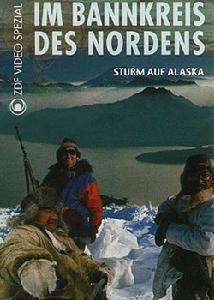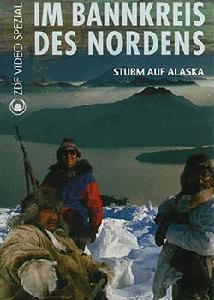 文字
文字影片評價
迷人的冰雪,英雄勇氣和冒險精神,這個四部分的紀錄片系列“北方咒語”,第一次出現在1999年一月份的德國國家電視台(ZDF),帶領觀眾進入戲劇魔幻般的冰雪世界並展現了令人窒息的北極美景。
160天的艱苦攝製足以引起觀眾敬畏,攝製人員經歷了格林蘭、加拿大、阿拉斯加和西伯利亞,可以想見,他們在攝氏零下50度以下的環境中是如何的工作,最終他們成功展示出迷人的“北方咒語”。 另外,它還回顧了這個地區250年的探險史,提供了非常有趣而深入的視野去眺望這個地球最偏遠角落今天的生活。 這四個部分分別是1.冰雪巨人(GIANT OF ICE AN SNOW);2.死亡迷宮(LABYRINTH OF DEATH);3.向著阿拉斯加(To Alaska);4.恐懼路途(PASSAGE OF FEAR)
以下英文資料涉及這裡的第三部分To Alaska
The third segment in the documentary Spell of the North describes the "rush to Alaska". In this film by Fritz Baumann the focus is on the hair-raising search for a land bridge between Siberia and America. In tracing the route of Captain Vitus Bering, whose thrust across Siberiaon the orders of the Czar became the largest expedition in history, the documentary captures the thrilling adventure, the discovery, and the conquest of Alaska up the present day. The film also captures the raw beauty and fascination of this seemingly endless landscape.
In the early 18th century it was still a mystery whether or not the extreme northeastern edge of Asia was connected to America by a land bridge. Czar Peter the Great delegated the task of finding out to the Danish seafarer Vitus Bering - the "Czar's Columbus". In the course of a gigantic expedition, Bering discovered Alaska - "the big land" - as the natives called it. He was responsible for opening this vast stretch of land to Russian traders and hunters. However, they made slaves of the Aleuts and forced them mercilessly to hunt the sought-after otter pelts.
As profits declined, the Czar sold Alaska to the United States. What several U.S. Senators had originally referred to as the "most expensive refrigerator in the world" suddenly became the center of attention once the news of spectacular discoveries of gold made the rounds. Since then in Alaska, one "rush" after another has swooped down on this land of superlatives - after the gold rush, it was copper; then copper was followed by lumber, and lumber by oil.
Today, the oil arteries of the Alaska pipeline transport crude worth 40 million dollars - every day. But oil has also become a curse for Alaska. The supertanker Exxon Valdez ran aground in 1989 ravaging the sea and coastline where Vitus Bering had gone ashore 250 year earlier. The oil spill was the largest in U.S., history.
This segment of the documentary concludes with the varying perspectives of the Eskimos in Alaska and their Siberian neighbors on the other side of the Bering Strait. Because Moscow has more or less ignored the people of northeastern Russia since the collapse of the Soviet Union, the groups there are rediscovering their traditional culture and survival techniques. In Alaska, on the other hand, the Eskimos continue to evolve away from their old traditions, because oil and money have changed the way they live.

